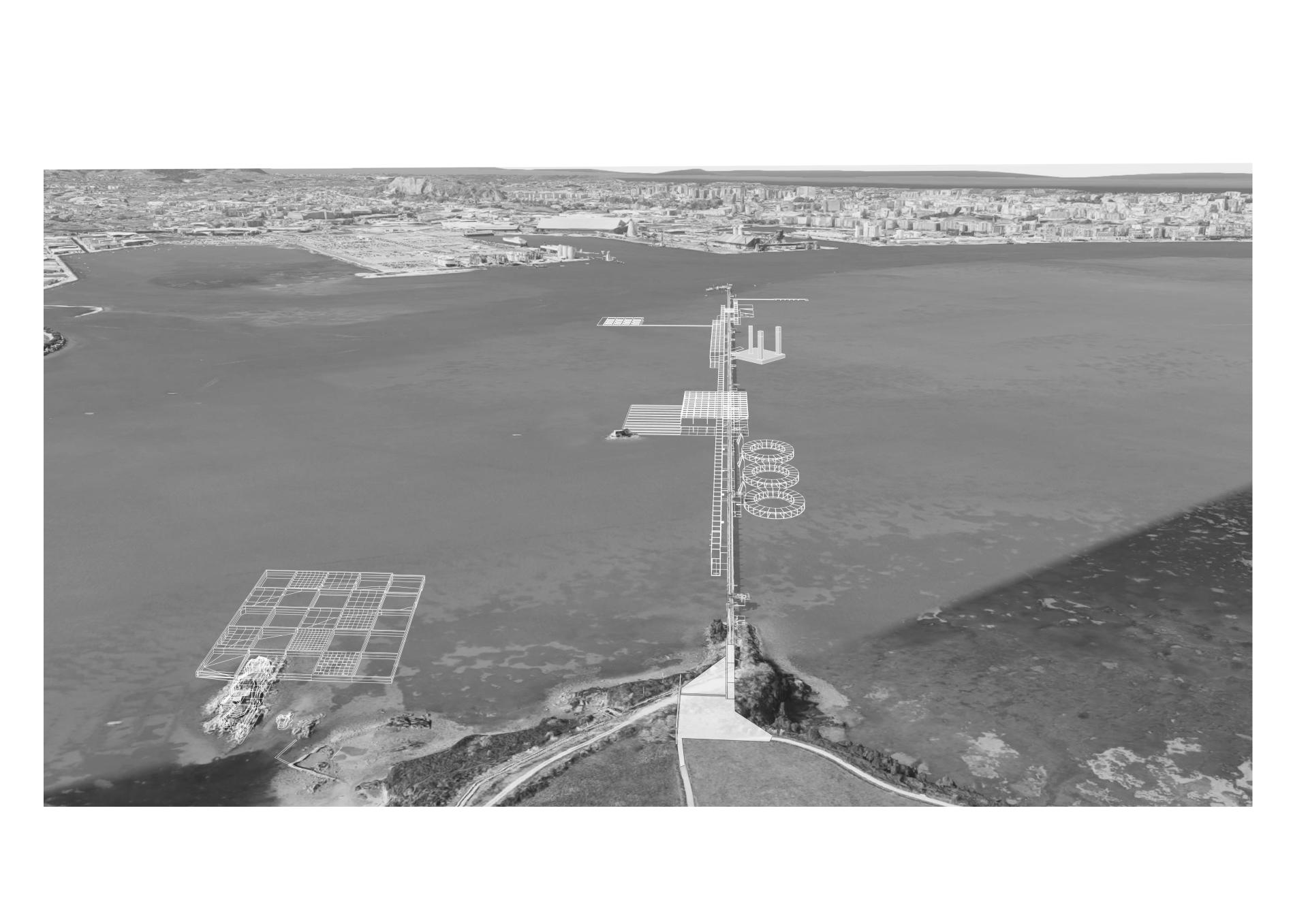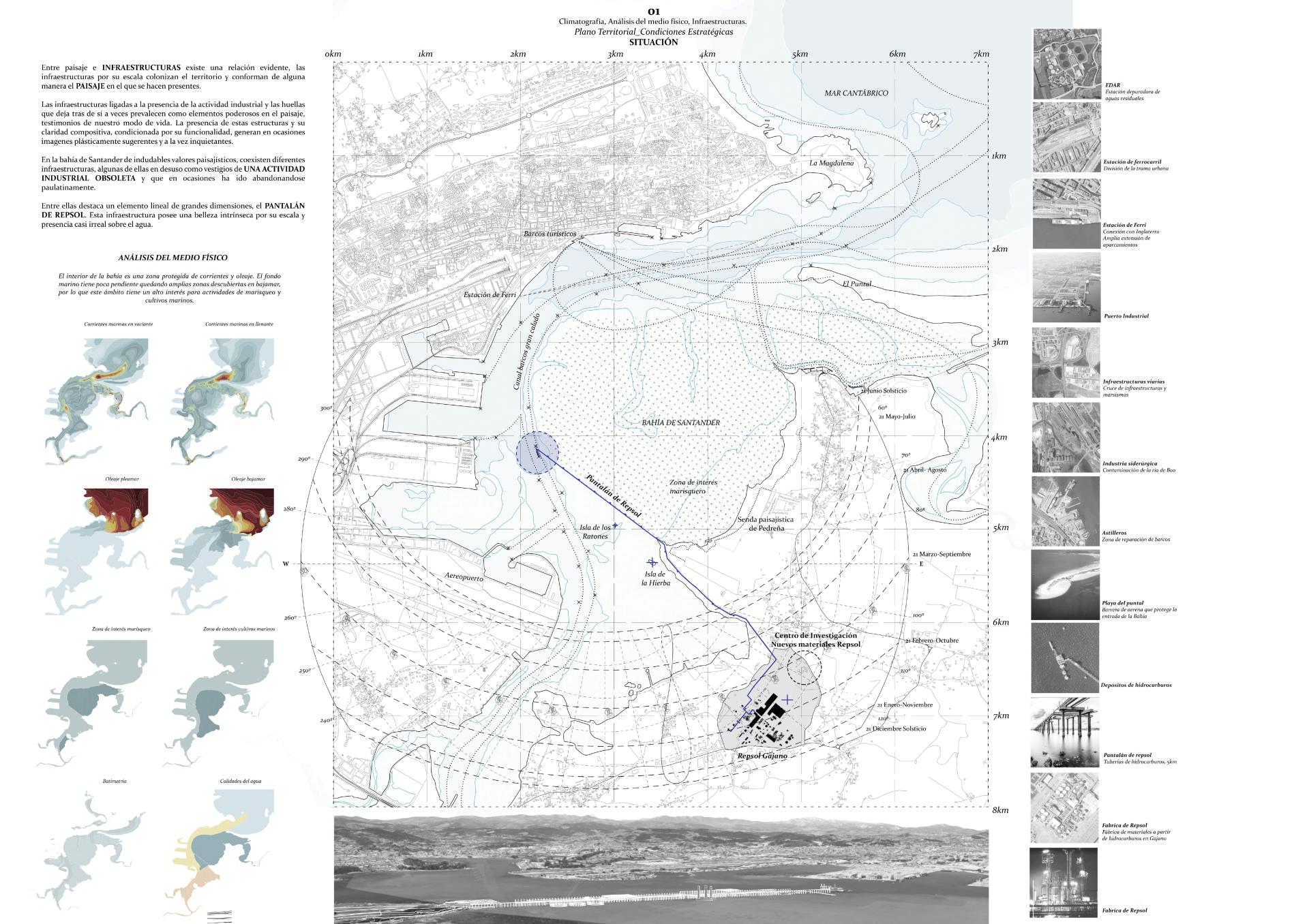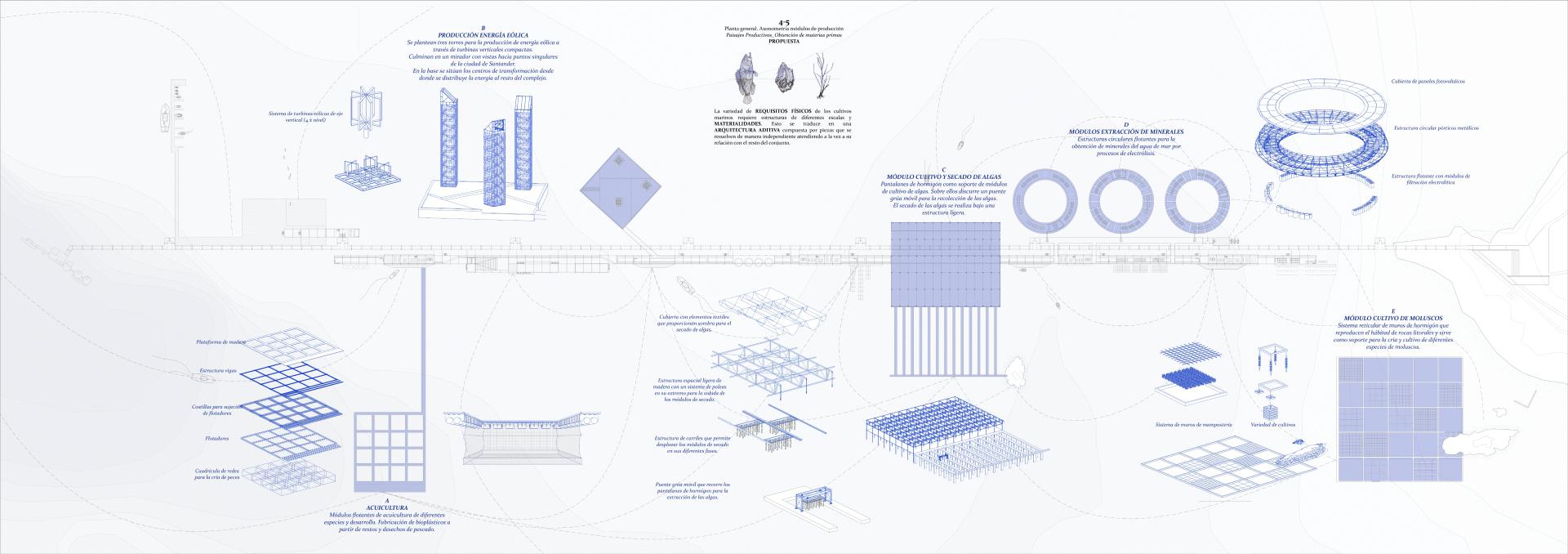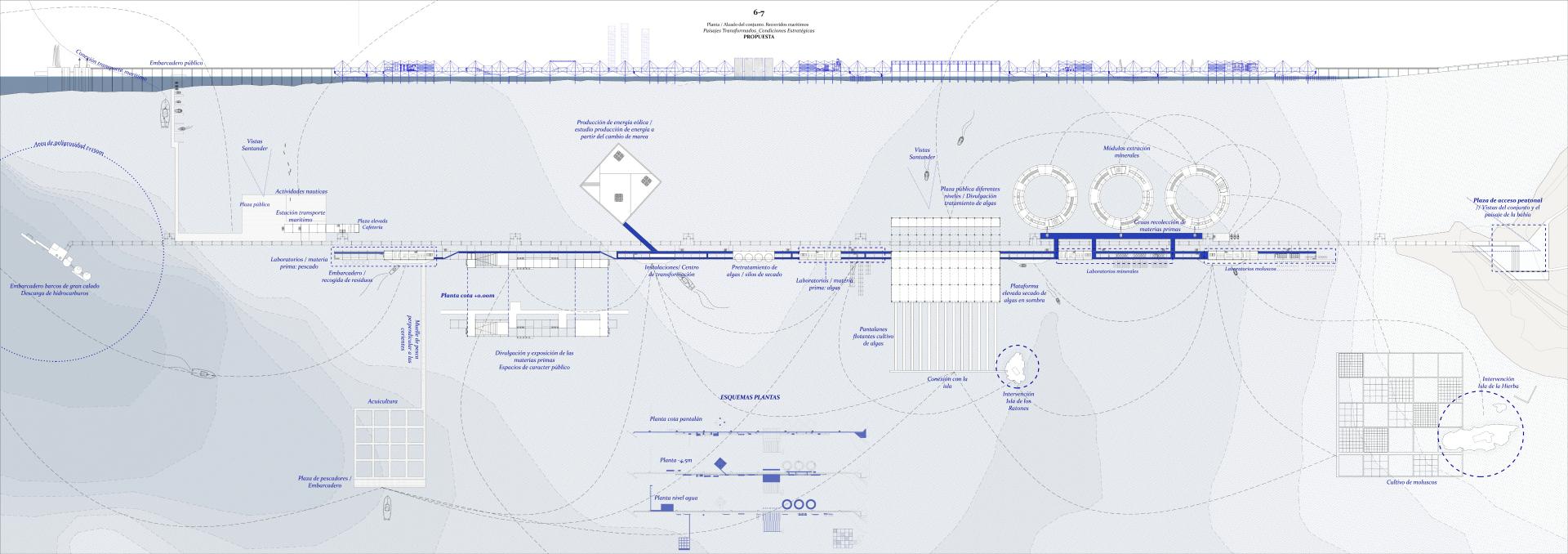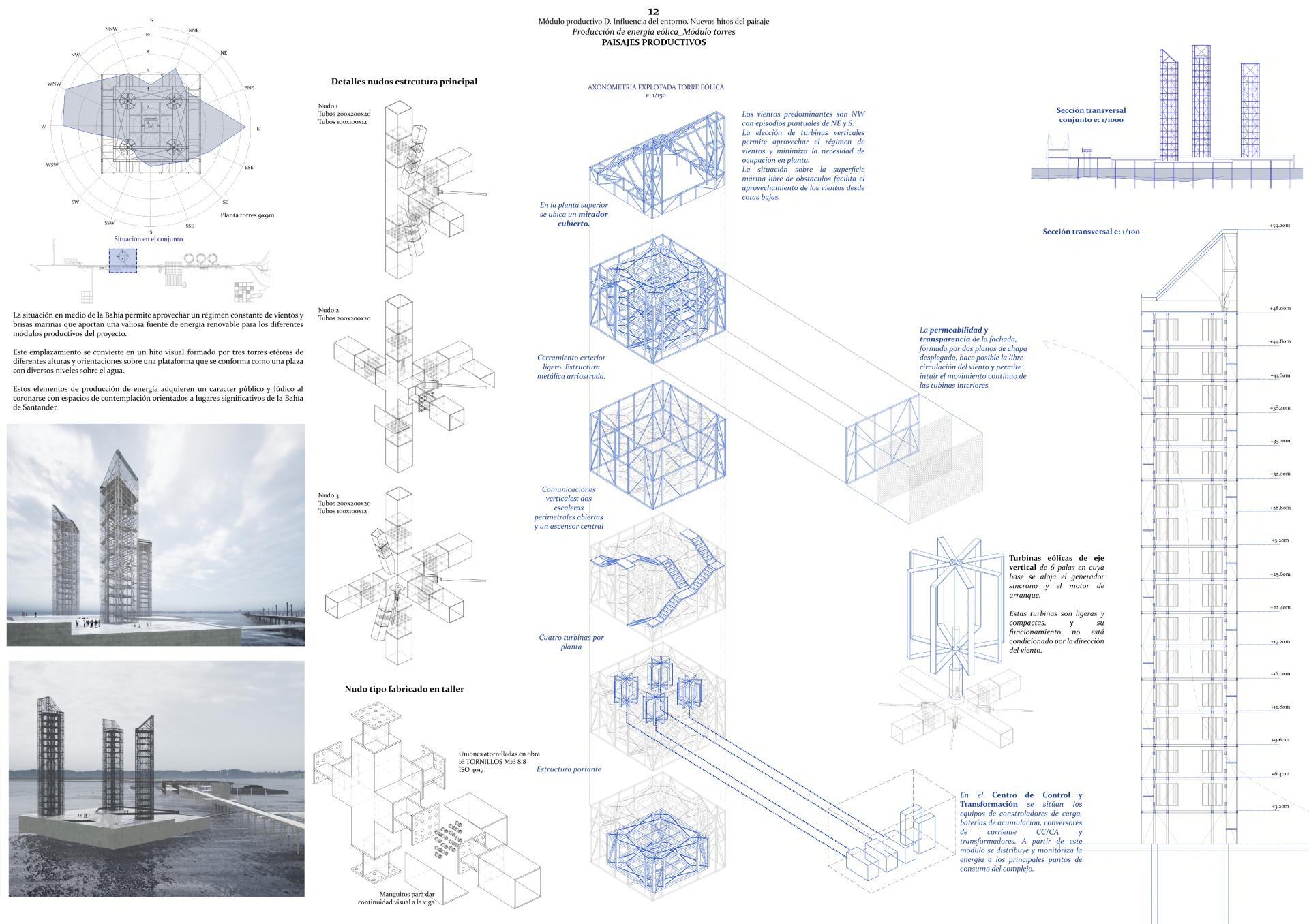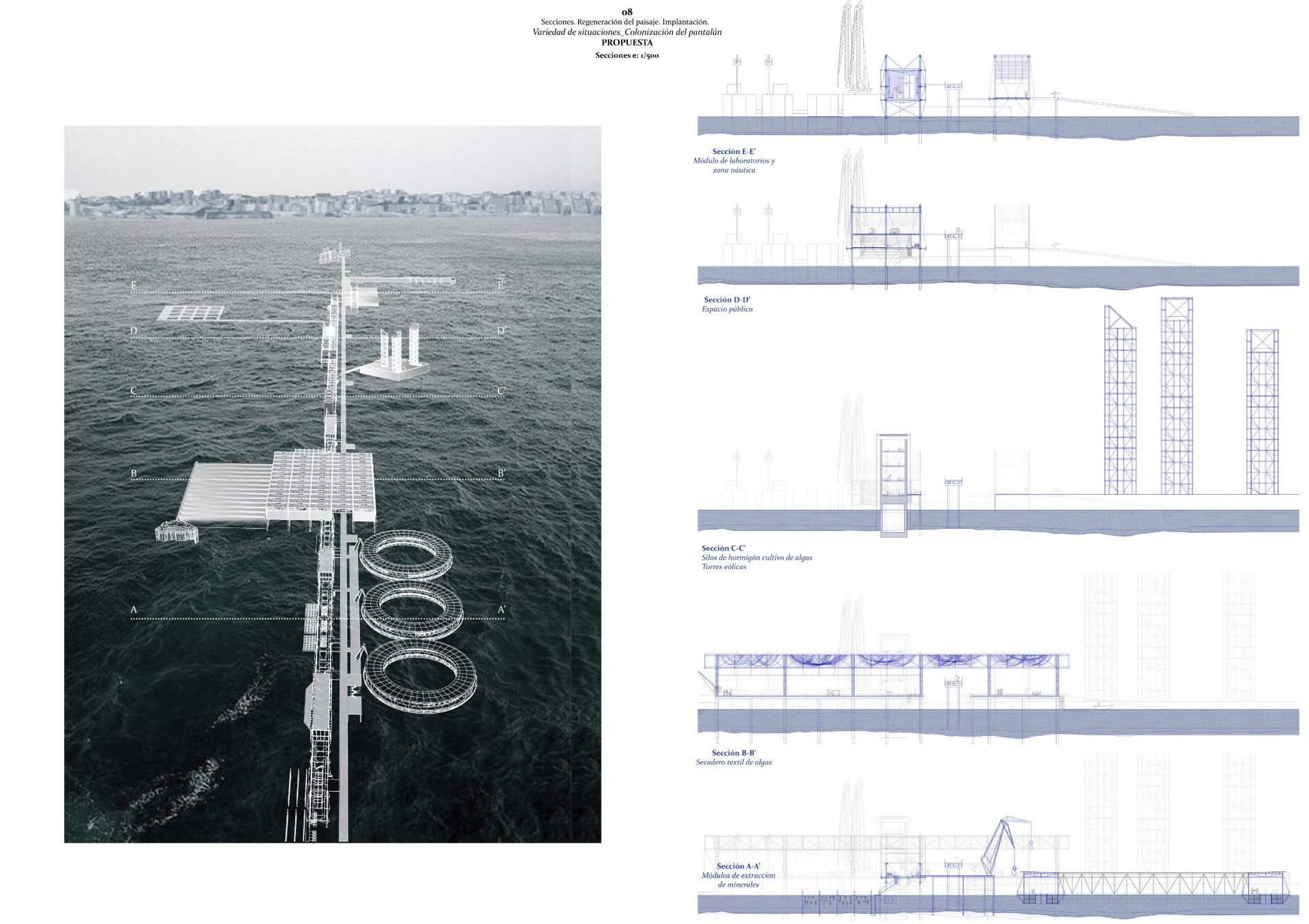Transformed Landscapes
Basic information
Project Title
Full project title
Category
Project Description
The infrastructures linked to the presence of industrial activity and the traces it leaves behind prevail as powerful elements in the landscape, testimonies of our way of life. The presence of these structures and their compositional clarity, conditioned by their functionality, sometimes generate images that are both plastically suggestive and disturbing. The proposal aims to take advantage of the privileged location of an existing infrastructure to develop uses related to its enviroment.
Geographical Scope
Project Region
Urban or rural issues
Physical or other transformations
EU Programme or fund
Which funds
Description of the project
Summary
The Bay of Santander is a place of unquestionable landscape values, the largest natural estuary of the northern Spanish coast. Different infrastructures coexist there, some of them in disuse as vestiges of an obsolete industrial activity.
The power of these structures and their compositional clarity, generate plastically suggestive and disturbing images at the same time. These infrastructures colonize and somehow conform the environment, creating transformed landscapes.
The Repsol Peer stands out among them as a large linear element. This infrastructure has an intrinsic beauty due to its scale and almost unreal presence on the water.
Its shape and size follow its function: to allow the access of ships to a point where there is enought depth and to hold the pipes that carry hydrocarbons to the Repsol factory.
Santander Bay is an area protected from sea currents and waves. A place with a high interest for shellfishing and marine farming activities.
From this environment characteristics the strategies of a multi-structural project are born:
-To give a new public use to the peer space.
-To create an axis of connection between the city and the bay, two realities unconnected until now.
-The regeneration of the obsolete industrial factory, creating a Research Center for new materials from marine resources, so that the unsustainable industry is not extinguished but transformed.
The project takes advantage of the location of this infrastructure to develop uses and activities related to its environment.
Key objectives for sustainability
The Marine Resources Research and Production Centre takes advantage of the Repsol Peer privileged location to regenerate and transform the existing industry into a sustainable one.
In this line of action, the Repsol Peer has a high potential, its great length allows it to cross different marine habitats depending on the depth, tides and sea currents. This enhances the possibility of creating marine farming of different organisms.
The research programs will be based on studies that are already being carried out, such as the production of bioplastics from fishing waste, the manufacture of batteries from minerals extracted from seawater, insulating materials obtained from mollusc shells and biofuels extracted from algae.
The energy required by the project activities is supplied by its own renewable energy sources: wind and photovoltaic energy. The location of the Peer in the middle of the Bay allows the continuous offshore wind regime to be used to create a wind energy production plant. Three towers with vertical axis turbines are designed creating an urban space over the sea.
The surface over the big floating structures is used to place photovoltaic panels to supplement the project's electricity needs.
Therefore the environmental sustainability and circularity of the project is based on the use of natural resources for the production of new materials and the energy self-sufficiency with renewable sources.
Key objectives for aesthetics and quality
The variety of physical requirements of the programme requires structures of different scales and materialities. This generates an additive architecture composed of different elements. If we walk through the project from the land connection of the peer to its end, we pass through areas with very different atmospheres.
In the area closest to the coast there is an island where ancient ruins are recovered creating a network of stone walls that constantly change with the tides.
Three large circular floating structures house the area where minerals are extracted from the water. These are lightweight metal structures with a roof of photovoltaic panels that produces reflections that vibrate to the rhythm of the waves.
The algae cultivation and drying area is resolved with a wooden structure, cables and fabrics that create a large shaded space. In contrast to the lightness of these elements, there are four massive cylindrical concrete towers for drying the algae.
At the end of the route there is a large square on which three wind towers raise. They are transparent metal structures that allow the wind to pass through. This site becomes a visual landmark for the Bay.
All these spaces are connected with a linear light metallic structure of masts and cables that evoke the image of sailing boats.
Key objectives for inclusion
One of the main points of the project is the creation of a continuous public space that runs along the line of the peer. The spaces of the Research Centre are open to public use, creating places of interpretation and learning for citizens. This proposal takes advantage of an existing infrastructure that was not accessible until now, so that it can be incorporated into the life of the city, creating new spaces for the enjoyment of the bay.
The transformation of the peer into a walkable space allows the connection with a new boat transport line that links the city of Santander with the tourist routes of the eastern area. This new connection will allow the recovery of an old degraded industrial location with new and more sustainable activities contributing to the social development of the area.
Physical or other transformations
Innovative character
The project combines three conceptual dimensions: sustainability, public use and landscape regeneration.
The creation of the Marine Resources Research and Production Centre allows the regeneration and sustainability of an obsolete existing industry.
Its integration with public use not only provides new spaces for enjoyment, but also becomes an element that allows the new possibilities of the circular economy, energy self-sufficiency and respect for the natural values of the environment to be made known.
The linearity of the peer is maintained, but the previously monotonous, continuous and non accessible element is transformed into a public space that allows different situations to be experienced not only because of the change of materials, textures and scale of each element it crosses, but also because of the changing character of the bay, which makes the same place different depending on the state of the sea.
The added architecture becomes the element that creates the synergy between nature and infrastructure. A landmark that is already part of the landscape is not eliminated but reinterpreted.

